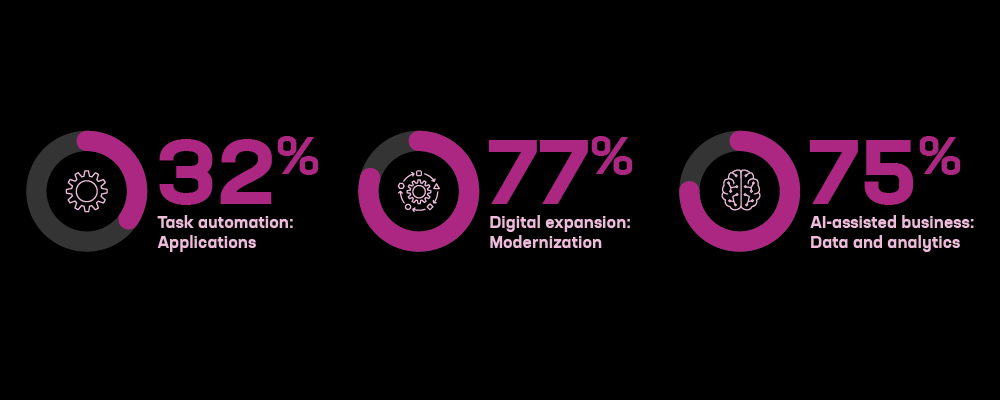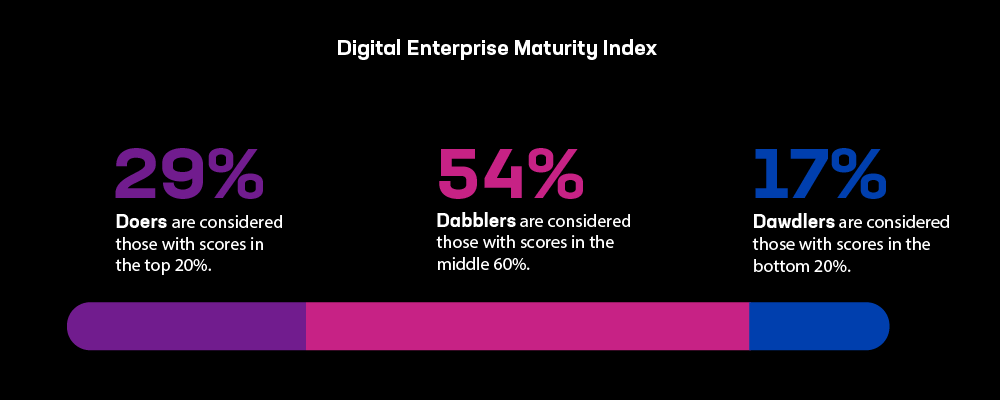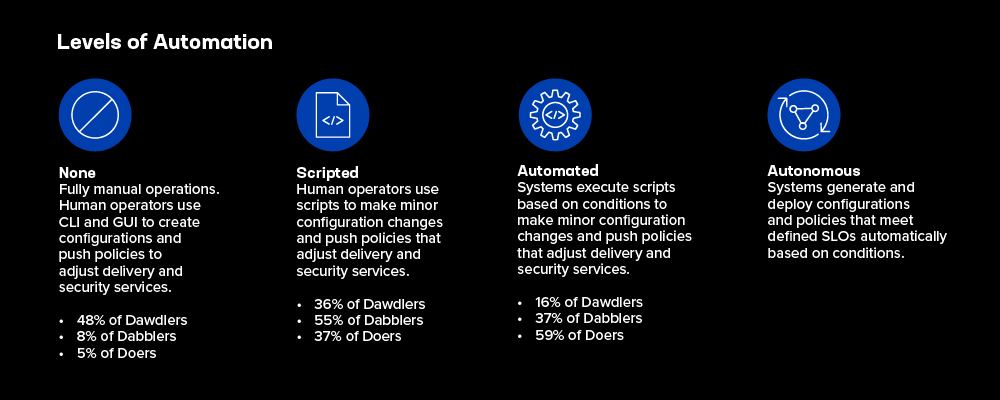Stand der digitalen Unternehmensreife: Die digitale Transformation ist noch nicht abgeschlossen
Organisationen machen große Fortschritte bei der Entwicklung hin zu digitalen Unternehmen, aber selbst die Macher sind noch nicht am Ziel. Die Trends bei der digitalen Transformation zeigen große Fortschritte, doch die Auswirkungen der KI auf die Geschäftswelt bringen neue Herausforderungen mit sich, die es zu bewältigen gilt.
Wir sprechen über die digitale Transformation, als wäre sie eine Reise mit einem klaren Ziel. Das impliziert ein Ende, an dem wir eine Feier veranstalten und uns selbst auf die Schulter klopfen können.
Doch solange sich die Technologie nicht weiterentwickelt – und das vergangene Jahr hat bewiesen, dass dies schlicht und ergreifend nicht der Fall ist –, wird auch die digitale Transformation nie zu Ende sein.
Der Grund hierfür ist, dass die drei Phasen Transformationszyklen darstellen, die immer durch die Einführung neuer Technologien eingeleitet werden. Betrachten wir kurz die drei Phasen der digitalen Transformation:
Anwendungen: Dies ist die Phase, in der Anwendungen erstellt werden, um manuelle Aufgaben zu ersetzen. Wenn wir auf die Anfänge des Internetzeitalters um das Jahr 2000 zurückblicken, sehen wir, dass Unternehmen diese Phase mehrfach durchlaufen haben. Mit jeder Generation von Anwendungsarchitekturen wird dieser Zyklus neu gestartet. Unternehmen führen Refactorings und Neuschreibungen durch und fügen neue Anwendungen hinzu, um die Vorteile neuer Architekturen und Technologien zu nutzen.
Modernisierung: Dies ist die Phase, in der die IT ihre Anstrengungen zur Modernisierung von Verfahren, Tools und Technologien verdoppelt, um alle diese neuen Anwendungen zu betreiben, zu optimieren und zu sichern. Diese Phase folgt stets auf die erste, da neue Anwendungsarchitekturen neue Anforderungen und Arbeitsweisen in den Betrieb bringen, die eine Überarbeitung unserer Herangehensweisen an Bereitstellung und Sicherheit erforderlich machen. Bedenken Sie, wie sehr die Cloud den Betrieb verändert hat. Überlegen Sie nun, wie sehr KI die Betriebsabläufe verändern wird. Verstehen Sie, was ich meine?
Daten und Analysen Ah, die gepriesene „letzte Phase“ des Zyklus. Organisationen finden heraus, welche Daten sie benötigen und wie sie diese analysieren, um sie auf Abläufe, Arbeitsabläufe und Geschäftsfunktionen anzuwenden und diese zu optimieren. Dies erfordert auch neue Praktiken und Ansätze. Bedenken Sie, dass die meisten Organisationen vor 2020 davon ausgingen, dass sich diese Phase auf Kunden- und Unternehmensdaten konzentrierte. Heute? Es dreht sich alles um Telemetrie (Betriebsdaten). Und morgen, wer weiß?
Damit möchte ich sagen, dass wir in diesem Jahr zwar mehr Unternehmen als Macher gesehen haben, das heißt, dass sie sich dem Ziel nähern, als digitales Unternehmen zu agieren, aber am Ende sind sie noch nicht, denn die künstliche Intelligenz ist da.
Das ist ein unglaublicher Fortschritt, das dürfen wir nicht übersehen. Im vergangenen Jahr zählten bei unserer ersten Untersuchung zur digitalen Reife der Unternehmen lediglich 4 % zur Kategorie der Macher . Bei den meisten handelte es sich (in 65 % aller Organisationen) um Dilettanten , und fast doppelt so viele trödelten noch auf ihrem Weg. Unsere Untersuchungen zeigen, dass es in diesem Jahr unglaubliche Fortschritte im Bereich der Digitalisierung des Geschäfts gibt. Fast drei von zehn (29 %) sind heute Macher und machen große Fortschritte bei der Nutzung der Leistungsfähigkeit von KI.
Doch selbst als digitaler Macher bleibt noch eine Menge Arbeit, insbesondere auf der Betriebsseite, wo AIOps vor der Tür steht.
Sehen Sie, sogar der Betrieb – die IT – muss diese Phasen durchlaufen und sie durchlaufen sie oft in einer anderen Geschwindigkeit und zu anderen Zeitpunkten als das Unternehmen. Was den Betrieb betrifft, sind die Organisationen wieder ganz in der ersten Phase angelangt, nutzen Anwendungen zur Automatisierung von Aufgaben und modernisieren ihre Praktiken und Ansätze, meist durch die Einführung von SRE-Operationen.
Doch als ob ich meinen Standpunkt zur digitalen Transformation beweisen wollte, wurden die Torpfosten verschoben. Mit dem Aufkommen der generativen KI ist die Fähigkeit, autonom zu agieren, nicht länger eine Science-Fiction-Sache. Obwohl also Organisationen – und insbesondere Macher – auf der Reifeskala der Automatisierung schon recht gute Fortschritte gemacht haben, gibt es jetzt ein neues Ziel auf ihrem organisatorischen Navigationssystem.
Die Auswirkungen der KI auf die Geschäftswelt bestehen darin, dass Unternehmen, um dieses Ziel zu erreichen, den Zyklus mithilfe neuer Technologien, Tools, Ansätze und Anwendungen neu starten müssen.
Doch ich habe keinen Zweifel, dass sie ihr Ziel erreichen werden. Und ihre bisherigen Erfahrungen und Modernisierungsbemühungen werden das Tempo erhöhen, mit dem sie den Zyklus erneut durchlaufen. Das ist der Vorteil der digitalen Transformation: Unternehmen können neue Technologien schnell übernehmen, aufnehmen und ihre Leistungsfähigkeit nutzen. Das bedeutet es, ein digitales Unternehmen zu sein.
Um herauszufinden, wie Unternehmen in jeder Phase abschneiden – und was sie tun müssen, um Fortschritte zu erzielen – können Sie sich ein Exemplar unseres zweiten jährlichen Digital Enterprise Maturity Index -Berichts holen.



